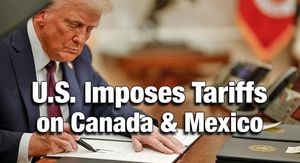Oral health inequalities present formidable challenges across the United States, with stark disparities observed particularly in rural communities and among various racial groups relying on Medi-Cal dental benefits. According to recent reports, many residents face significant hurdles when trying to access quality dental care, raising alarm among public health officials.
Rural populations often encounter barriers stemming from insufficient professional dentists, financial obstacles, and the necessity of long-distance travel to access dental facilities. The lack of readily available healthcare practitioners makes it incredibly difficult for individuals to receive necessary dental treatments.
To address these pressing issues, experts advocate implementing innovative solutions such as teledentistry. Investing in communication technologies to facilitate virtual consultations can help bridge the gap between rural residents and quality dental care. Remote consultations, especially through video conferencing, permit initial assessments, follow-up visits, and necessary patient education without the burden of travel.
Mobile dental units equipped with telehealth capabilities represent another proposed solution. These units can deliver both physical and virtual consultations to underserved areas gaining traction. Alongside this, the integration of AI-driven tools to analyze dental images allows dental professionals to prioritize urgent cases and devise treatment plans remotely, promoting efficient resource management.
While technological advancements offer hope, increased funding for rural health services remains indispensable. Both federal and local governments must allocate resources to ameliorate access to preventative and curative dental services. Collaborations with rural-based private organizations can help target underserved populations and provide the required oral healthcare.
The establishment of more community dental clinics is among the recommended approaches. For example, increasing the number of Great Expressions offices can provide affordable or free dental care to struggling communities. Similarly, financial school-based programs can guarantee regular oral checkups and education, instilling good oral hygiene practices from childhood.
Additional hurdles to overcome include the limited number of dental professionals willing to practice in rural areas. Many dentists pursue careers in urban locations where salaries and opportunities are more attractive. Consequently, practitioners suggest strategies to entice and retain dental professionals. For example, governments could introduce loan forgiveness programs for dentists committed to working in rural locales. Enhanced professional development initiatives could also facilitate the appeal of rural healthcare careers.
Policy reform presents another avenue for enhancing dental accessibility. Expanding Medicaid and Medicare dental benefits could considerably bolster access to quality services. This expansion would allow for the inclusion of mid-level dental providers, capable of offering basic services like fillings and extractions.
Challenges tied to licensing and taxation must also be addressed. Simplifying licensing restrictions for foreign-trained dentists could boost the number of professionals willing to practice in remote settings. Simultaneously, offering tax incentives for clinics operating within underserved areas may encourage long-term investment and improved infrastructure for oral health services.
With regard to Medi-Cal, disparities have been quantified demographically. A recent report highlighted the 'dental divide' within the Los Angeles area, wherein only about 20% to 25% of Medi-Cal recipients utilize their dental benefits effectively. Notably, it has been reported by Marlyn Pulido, senior research manager at the California Pan-Ethnic Health Network (C-PEHN), “Asian beneficiaries consistently have the highest utilization across all service types,” whereas American Indian and Pacific Islander recipients rank the lowest.
Many Medi-Cal beneficiaries remain unaware of their entitlement to dental coverage, stemming from confusion created when the state halved and then reinstated dental benefits since 2018. Ruqayya Ahmad, policy manager at C-PEHN, pointed out the tangible issues posed by “the major shortage of participating dentists, especially providers of color.” Reports indicate only 21% of California dentists participated in Medi-Cal as of 2021, with just 6% identifying as Latino and only 2% as Black.
To address these issues, report authors advocate for training and licensing additional dental therapists to provide basic dental care services. Such measures would not only extend coverage but also streamline the process of obtaining dental care for Medi-Cal beneficiaries.
Overall, significant work is required to remedy the systemic disparities affecting rural and minority populations' access to oral healthcare. A multifaceted approach combining financial assistance, technological innovations, and policy reforms is suggested to tackle these challenges head-on. Only through collaborative efforts among federal and local governments, healthcare organizations, and private entities can equitable access to quality oral health services be achieved for all communities.



